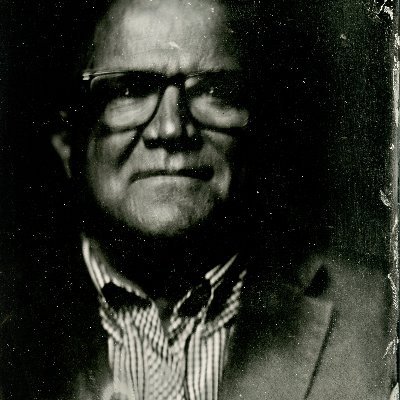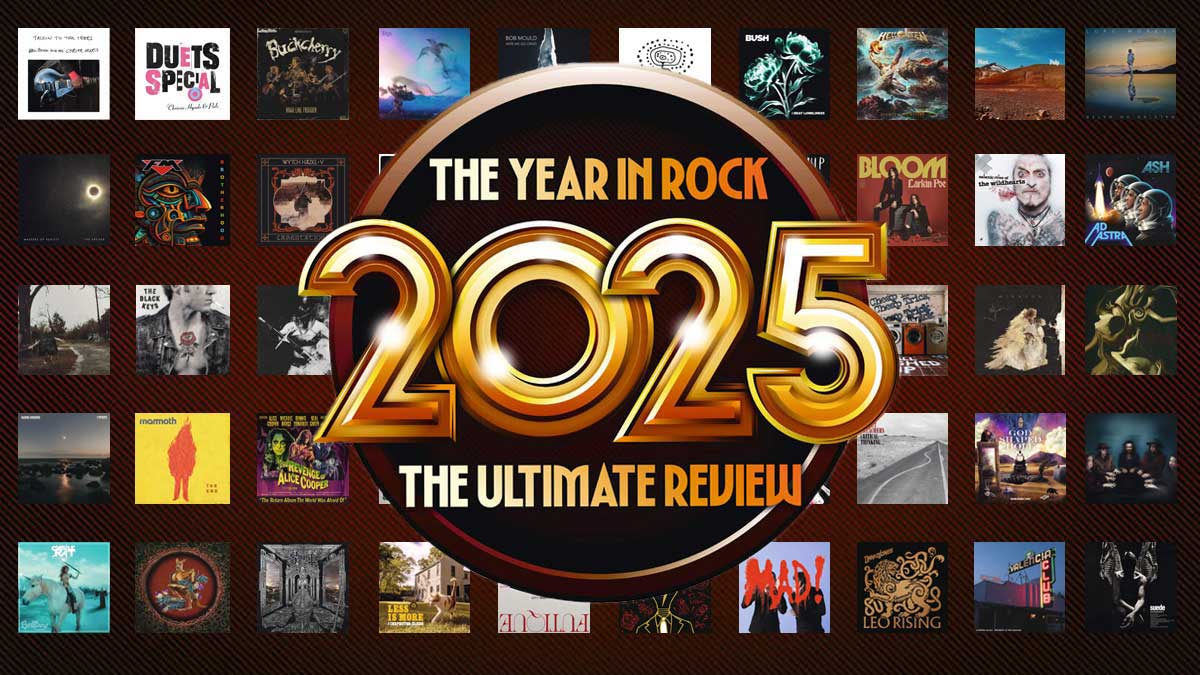Darkness, destruction, drugs and a dead crow: how Therapy? killed off their hated 'Irish Nirvana' tag with the daring Nurse
Released on November 2, 1992, Therapy?'s twisted major label debut Nurse torched expectations and paved way for one of the decade's finest rock albums

Therapy? seemed fearless and sure-footed in 1992. They had the tunes, the noise and magnificent wit. They were tour-ready and fit to hurtle out of the dirt-rock circuit onto the festival stages. Their indie status had been endorsed by the label imprints of Wiiija, Southern Records, and Touch and Go in America. The music media admired them and it was an era when fierce-sounding, alternative music had never been more popular.
Vocalist/guitarist Andy Cairns, bassist Michael McKeegan and drummer Fyfe Ewing worked out of their base in East Antrim, Northern Ireland, touring in an orange Transit van called Big Bertha, surviving on cornflakes and coleslaw. They were young and impetuous, but also frustrated by the budget constraints of the DIY lifestyle. An American tour was unaffordable. The momentum was perhaps faltering. Therapy? realised they were in a precarious place. They also appreciated the fun in walking that line. And, most always, they were singing about disturbed human beings.
“There’s something macabre in all of us,” Andy told Siren magazine in that messy year. “Why do we like watching people on a tightrope? It’s not because of the skill, I’m sure. It’s because we like watching someone else put their life on the line.”
There were many risky steps that led to the Nurse album, the band’s major label debut, released in the UK on November 2, 1992. The record is sometimes passed over in Therapy? lore, but it was an important piece of artistic slight. They breached the UK Singles and Albums charts for the first time. And despite a sniffy write-off from their old indie allies ("Does Andy want to be a rock star?” was the Southern Records snub), they carried their original fanbase and grew it, selling 40,000 copies in the first weeks and 120,000 over the longer haul.
Hindsight explains why the record is bristling and contrary. The band had watched the grunge upsurge in 1991 and while they sometimes had been tagged with the movement (and had toured with Hole), they were determined not to be typecast.
After all, their musical touchstones included Big Black, Captain Beefheart, Ulster punk, Belgian New Beat and Hüsker Dü. Plus, the avant-jazz of players like John Zorn. Just to further his distance from all things Seattle, Cairns chopped off his long hair. Any record company approaches that had mentioned the ‘g’ word were instantly rejected. The band had signed to A&M on the promise of artistic freedom.
So, Nurse begins with Nausea and an admission that the internal pressures were severe. The lyric was partly inspired by a 1938 novel from philosopher Jean-Paul Sartre (also referenced by Blur on For Tomorrow). La Nausée was about a moment of retch-inducing self-awareness. Once this shock had been inflicted, it was easier to tough it out, without deviation.
The band had signed their record deal on June 5, 1992. A&M encouraged them to get an album out by the end of the year. So they decamped to a farmhouse in Carlow in the south-east of Ireland for a writing session. They had food provisions, alcohol and a supply of amphetamine sulphate.
The speed intake may help to explain the uptight, insular mood of the songs. The edgy dynamic was further twisted by the surroundings – a dead crow was found hanging in the barn and various other weird omens appeared outdoors. The trio barely slept, wrote their cantankerous tunes and had a huge spat. An antique mirror was trashed and a glazier was required to fix some window panes, but the session delivered.
The latest news, features and interviews direct to your inbox, from the global home of alternative music.
The demo sessions took place at Annamoe, 20 miles from Dublin. This version of the track Gone became the definitive take, and a cello was later added, courtesy of David James. It was a hint of the territory that the band would explore on the Infernal Love album in 1995, but at this moment, it was a rare picture of goth tonalities, body-harming and compassion for a friend in distress.
The record company had suggested Butch Vig (Nirvana/Smashing Pumpkins) as producer, but the band settled on Harvey Birrell, their soundman, who was also showing studio form with acts like Senseless Things. They were allocated three weeks at Loco Studios in Caerlton, near Newport. Much of this was spent in perfecting the sonics and machine-like drum patterns. As well as the aforementioned influences, Fyfe Ewing’s precise clatter owed something to the work of Stewart Copeland of The Police and the icy mood that Martin Hannett had arranged around the anguish of Joy Division.
Teethgrinder was the first single from the sessions, an allusion to the singer’s chemical intake and also to a documentary, American Conversations, in which the night-time habit was discussed. The riffs were impeccable, and a Michael McKeegan bass line was repurposed for the bridge section. The band had reached the mainstream charts without junking their integrity. The tightrope manoeuvres were going well.
Much later, Andy Cairns would confess that the conflict in Northern Ireland was an internalised trauma. His instincts led him to make less of it in song. That, surely, was the chart-rousing domain of U2, Simple Minds and Sting. “We would write songs about Charles Manson and Jeffrey Dahmer, but we would never dare write about the Shankill Butchers, it was such a touchy subject,” he reckoned later.
But that’s surely a note that conditions the hurt of Gone and certainly the fever of Accelerator. In the latter, Therapy? recreate the lawless rush of a Belfast joyrider in a stolen motor, spliced with dialogue from the American car-chase tradition. In the meta-literate world of Therapy?, high art and trash culture were both valid sources, frequently butt-joined and jarring.
Post-punk is a lax term these days, but for original groups like Gang of 4 and Public Image Limited, it had been an imperative to approach the '80s with a sound that razed away the shapes and the sounds of conservative rock music. This was another Therapy? line of enquiry, used well on the abstractions of Zipless and Deep Sleep, where it’s clear that McKeegan had studied the dub frequencies of PIL’s Jah Wobble.
The band had played loose with samples on the record and later realised that the clearance costs were alarming. Nick Cave’s opening line of the record, “Here I am, motherfuckers” - a sample from John Hillcoat’s 1988 cult classic Ghosts …Of The Civil Dead - was secured with some cash in a brown envelope, but the voices of Hypermania were replaced by the band themselves.
The intake of weed and acid in the final sessions may have blunted the record’s intended assault, however, and the track Disgracelands is a predictable critique of America’s mainstream, which Cairns now admits was “really naïve.”
Years later, he also stated that he wasn’t an outright fan of Nurse, overall, saying, “I’m really disappointed that it sounded so thin. I like guitars that really take your head off. The first two albums were lo-fi sonically, but they were still searing and brilliant. Nurse to me was a disappointment.”
But there was another important qualifier for the band's frontman.
“If we had made a big loud, rock album in a grunge style, we’d have been pushed under the carpet whenever grunge died. So it kinda worked for us. That’s when I said, Fuck it, I wanna make a punk album. That’s when Troublegum came along.”
Certainly the arrival of next-era Screamager in 1993 was an unabased love-in with the choruses, the tunes and high spirits. They had given themselves permission to become rock and roll omnivores. But Nurse had made that possible. It had maintained a line back to the indie records, Babyteeth and Pleasure Death. It had afforded them time, trust and credibility at a tough juncture. Nurse was the appropriate treatment and it fixed the affliction.
“I think Nurse stood out at the time because it was an anomaly,” Cairns reflected in the sleevenotes for the album's reissue in 2020. “It sounded absolutely nothing like the alternative rock bands people were trying to bracket us with. That three people from East Antrim got together at the height of grunge and made something so unusual and eclectic makes me hold my head high. It sounds to me like a band determined to do things our own way.”
Stuart Bailie is a journalist and broadcaster based in Belfast. He is the editor of the quarterly Dig With It magazine, and his work has appeared in NME, Mojo, Uncut, Q, The Times, The Sunday Times, The Mirror, The Irish Times, Classic Rock and Hot Press. He was Assistant Editor of NME from 1992 to 1996 and is the author of Philip Lynott: The Ballad of the Thin Man, Trouble Songs: Music and Conflict In Northern Ireland, and 75 Van Songs: Into the Van Morrison Songbook.

